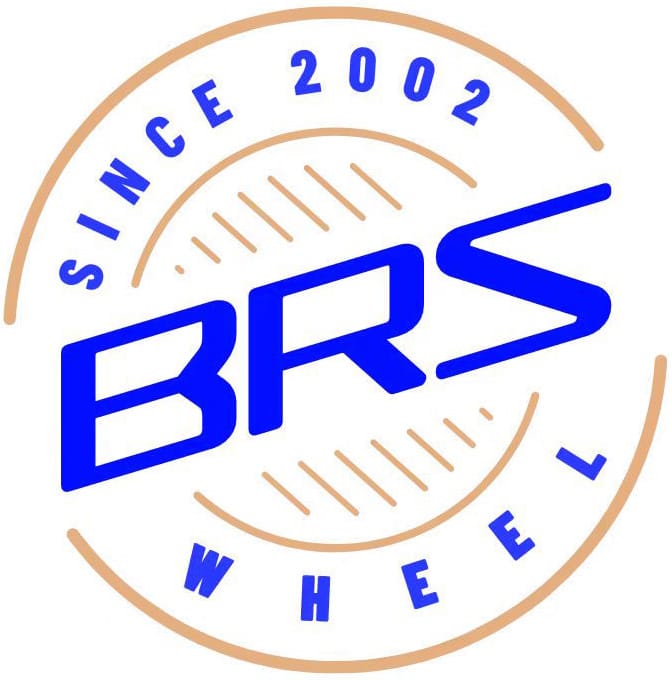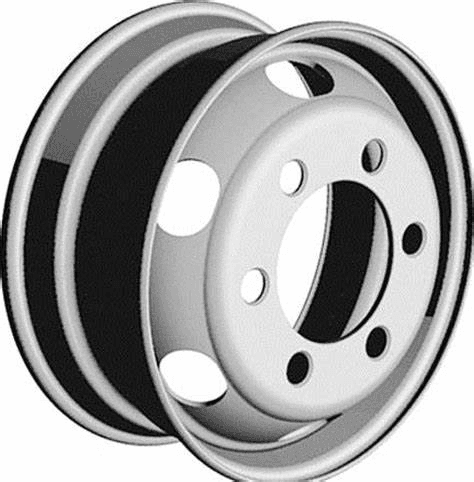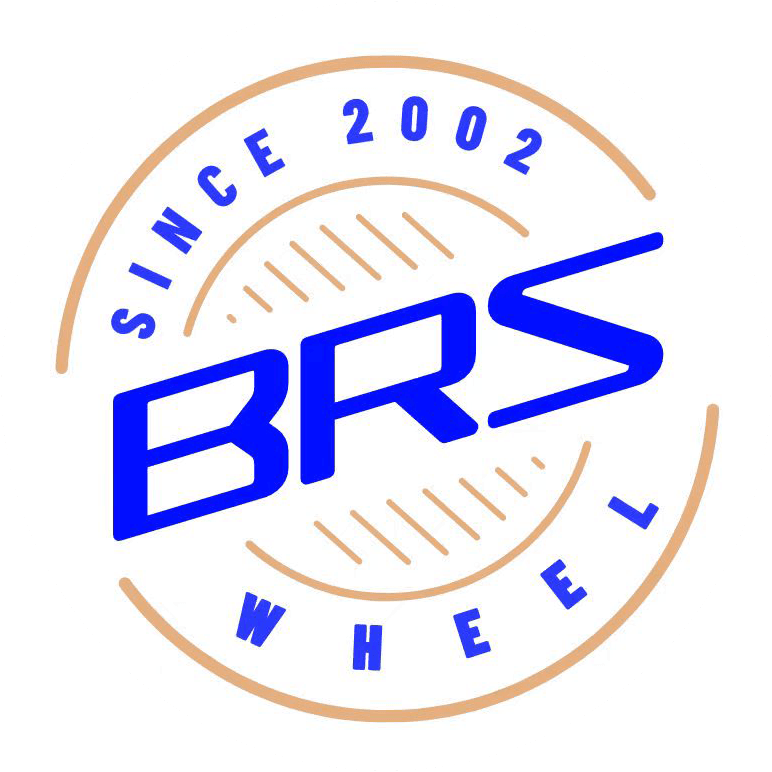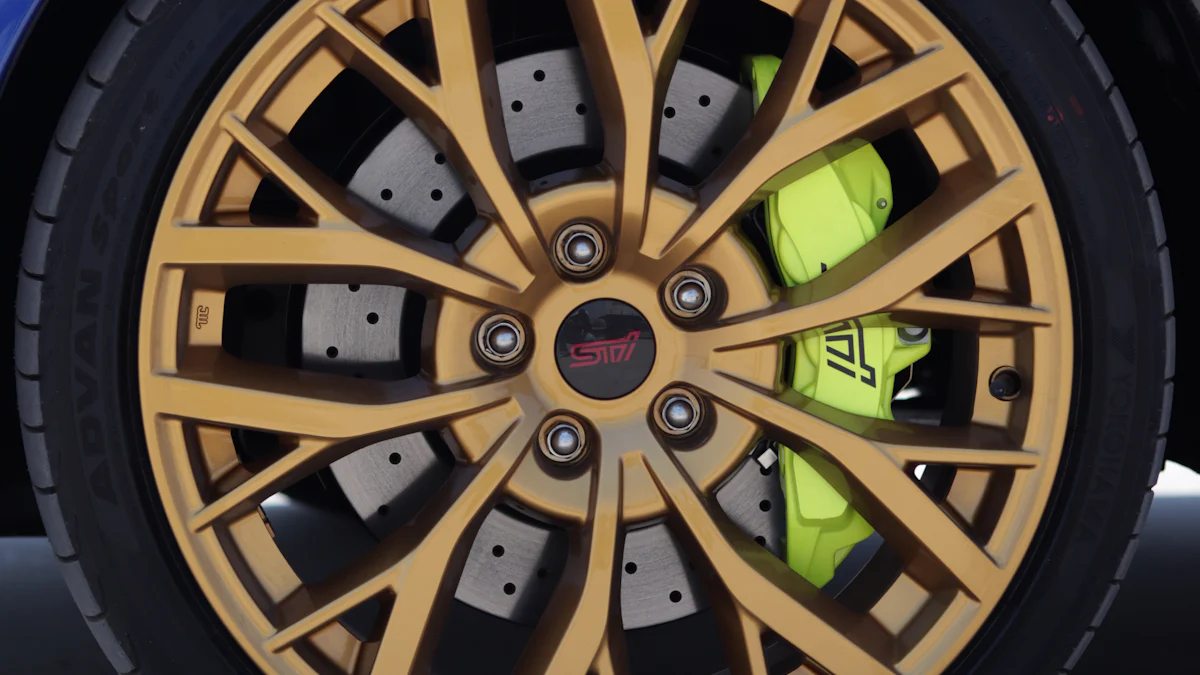
Choosing the right 15×6 steel wheel plays a crucial role in your vehicle’s safety and performance. A well-fitted wheel ensures stability, enhances handling, and supports the weight of your car effectively. Factors like size, bolt pattern, and offset directly impact how the wheel fits and functions. Steel wheels, known for their durability and cost-effectiveness, are ideal for heavy-duty use or challenging conditions. Proper installation and regular maintenance keep your wheels in top shape, ensuring they last longer and perform reliably. By making informed choices, you can enjoy a smoother and safer driving experience.
Key Takeaways
- Choosing the right size, bolt pattern, and offset is crucial for ensuring your 15×6 steel wheel fits your vehicle properly and enhances performance.
- Consult your vehicle’s manual or a professional to confirm specifications before purchasing to avoid compatibility issues.
- Test fitting the wheel before final installation helps identify any clearance problems and ensures a secure fit.
- Regular maintenance, including cleaning and inspections, can significantly extend the lifespan of your steel wheels and maintain their appearance.
- Steel wheels are ideal for heavy-duty use due to their durability and cost-effectiveness, making them a great choice for challenging driving conditions.
- Consider customizing the finish of your steel wheels to match your vehicle’s style while also providing protection against rust.
- Balancing and aligning your wheels after installation is essential for optimal performance and safety on the road.
Key Factors to Consider When Choosing a 15×6 Steel Wheel

When selecting the perfect 15×6 steel wheel for your vehicle, understanding the key factors can make all the difference. Each aspect plays a role in ensuring the wheel fits properly, performs well, and meets your driving needs. Let’s break it down step by step.
Understanding Wheel Size
The size of the wheel is one of the most critical factors. A 15×6 steel wheel has a diameter of 15 inches and a width of 6 inches. These dimensions determine the type of tires you can mount. For example, a 15×6 wheel typically accommodates tires like 185/60-15, which are common for many vehicles.
Choosing the right size ensures proper fitment and optimal performance. A mismatch in size can lead to issues like poor handling or uneven tire wear. Always check your vehicle’s manual or consult a professional to confirm the recommended wheel size for your car. This step guarantees that the wheel will align with your vehicle’s specifications.
Bolt Pattern and Lug Nut Fitment
The bolt pattern refers to the arrangement of the bolt holes on the wheel. It’s expressed as the number of bolts and the diameter of the circle they form. For instance, a 15×6 steel wheel might have a bolt pattern like 5×115, meaning it has five bolt holes arranged in a 115mm circle. Ensuring the bolt pattern matches your vehicle’s hub assembly is crucial for a secure fit.
Lug nut fitment is equally important. The lug nuts must match the wheel’s design to ensure proper fastening. Incorrect fitment can lead to safety risks, such as the wheel loosening while driving. Double-check these details before purchasing to avoid compatibility issues.
Wheel Offset and Backspacing
Offset and backspacing affect how the wheel sits on your vehicle. Offset measures the distance between the wheel’s mounting surface and its centerline. A positive offset means the mounting surface is closer to the front of the wheel, while a negative offset places it closer to the back. Backspacing, on the other hand, measures the distance from the mounting surface to the back edge of the wheel.
These measurements influence the wheel’s position relative to the suspension and body. For example, a wheel with too much positive offset might rub against the suspension, while too much negative offset could cause clearance issues with the fenders. Proper offset and backspacing ensure the wheel fits without interfering with other components, providing a smooth and safe driving experience.
Material and Finish Options
When choosing a 15×6 steel wheel, the material and finish play a significant role in both functionality and aesthetics. Steel wheels are known for their durability, making them a reliable choice for various driving conditions. They can withstand heavy loads and resist damage from rough terrains, which is why many drivers prefer them for off-road or winter use.
The finish of a steel wheel not only enhances its appearance but also protects it from corrosion and wear. Common finishes include black, silver, and gray. For example, some 15×6 steel wheels come in a sleek black finish, while others feature a classic silver look. These finishes not only add style to your vehicle but also provide an extra layer of protection against rust and environmental elements.
If you’re looking for something more unique, you can explore custom finishes. Options like matte black or polished steel can give your vehicle a distinct look. Additionally, some wheels, such as the Vision 55 steel gray wheels, offer a modern aesthetic while maintaining the strength and reliability of steel. These choices allow you to match the wheel’s appearance with your vehicle’s design.
When selecting a finish, consider your driving environment. A black finish, for instance, is ideal for hiding dirt and grime, making it a practical choice for off-road adventures. On the other hand, a silver or polished finish might be better suited for urban settings where style takes precedence.
Ultimately, the material and finish you choose should align with your driving needs and personal preferences. By selecting the right combination, you can ensure your 15×6 steel wheel not only performs well but also complements your vehicle’s overall look.
Ensuring Compatibility of a 15×6 Steel Wheel with Your Vehicle
Ensuring that your 15×6 steel wheel is compatible with your vehicle is crucial for safety and performance. A mismatch can lead to handling issues, uneven tire wear, or even damage to your car. By following these steps, you can confidently select a wheel that fits perfectly.
Checking Vehicle Specifications
Start by reviewing your vehicle’s specifications. Your car’s manual is the best place to find accurate details about the recommended wheel size, bolt pattern, offset, and load rating. These specifications ensure that the wheel aligns with your car’s design and performance requirements.
Pay close attention to the bolt pattern and offset. The bolt pattern must match your vehicle’s hub assembly for a secure fit. The offset determines how the wheel sits in relation to the suspension and fenders. For example, a wheel with the wrong offset might rub against the suspension or stick out too far, causing clearance problems.
If you’re unsure about any of these details, check the label inside your driver’s side door or consult the manufacturer’s website. This step ensures you’re starting with the right information.
Consulting with Professionals
When in doubt, seek advice from professionals. Tire and wheel specialists have the expertise to guide you through the selection process. They can confirm whether a specific 15×6 steel wheel will work with your vehicle and recommend the best options based on your driving needs.
Professionals can also help you understand the differences between steel and aluminum wheels. Steel wheels are heavier but more durable, making them ideal for off-road or heavy-duty use. Aluminum wheels, on the other hand, are lighter and offer more design options. If durability and affordability are your priorities, steel wheels are often the better choice.
Visiting a local tire shop or contacting a trusted supplier allows you to ask questions and get personalized recommendations. Their insights can save you time and prevent costly mistakes.
Test Fitting the Wheel
Before making a final decision, test fit the wheel on your vehicle. This step ensures that the wheel not only fits but also functions properly. A test fit allows you to check for any clearance issues with the suspension, brakes, or fenders.
During the test fit, pay attention to how the wheel aligns with the hub and how the lug nuts fasten. A proper fit should feel secure, with no wobbling or gaps. If the wheel doesn’t fit as expected, it’s better to identify the issue now rather than after installation.
Test fitting also gives you a chance to see how the wheel looks on your vehicle. While functionality is the priority, aesthetics matter too. A sleek black or polished steel finish can enhance your car’s appearance while maintaining the durability steel wheels are known for.
By taking the time to check specifications, consult experts, and test fit the wheel, you can ensure compatibility and enjoy a smoother, safer driving experience.
Step-by-Step Guide to Installing a 15×6 Steel Wheel
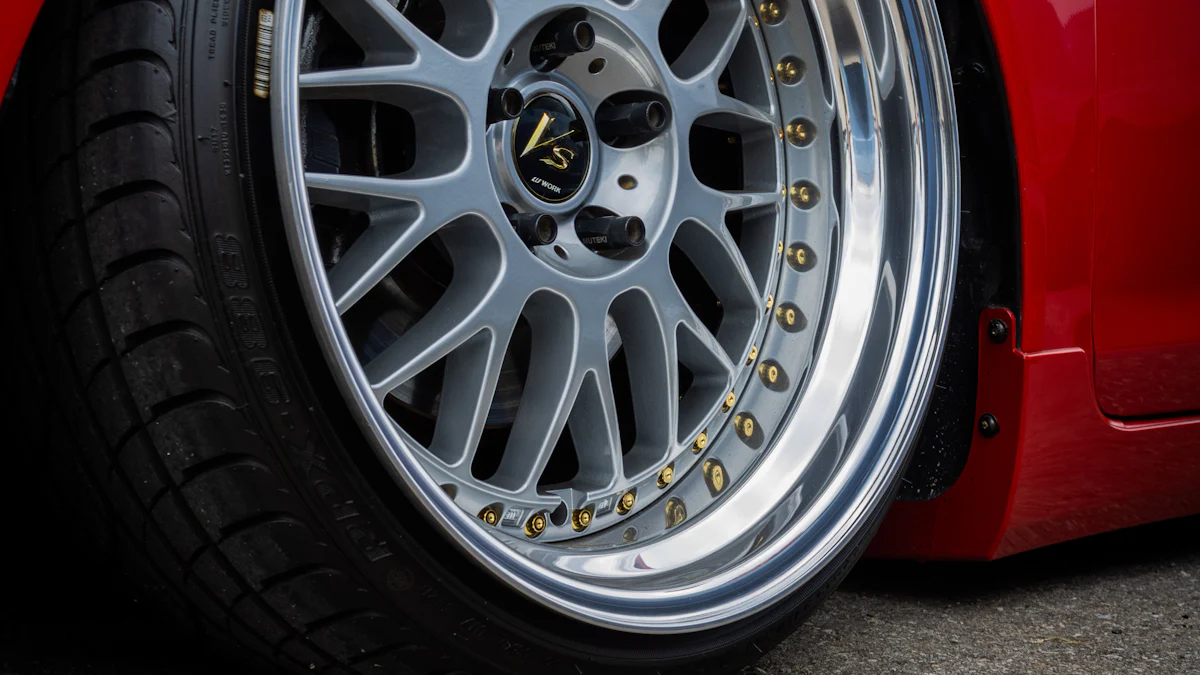
Installing a 15×6 steel wheel on your vehicle doesn’t have to be complicated. With the right tools and a clear process, you can get the job done efficiently and safely. Follow this step-by-step guide to ensure a smooth installation.
Tools You’ll Need
Before you start, gather all the necessary tools. Having everything ready will save you time and make the process easier. Here’s what you’ll need:
- Jack and Jack Stands: To lift and secure your vehicle.
- Lug Wrench: For loosening and tightening the lug nuts.
- Torque Wrench: To ensure the lug nuts are tightened to the correct specifications.
- Wheel Chocks: To prevent the vehicle from rolling while you work.
- Gloves and Safety Glasses: For your safety during the installation.
- Spacer (if needed): If your vehicle requires additional clearance, such as when fitting a 15×6 steel wheel on a ’76 hub, a 1/4″ spacer might be necessary.
Having these tools on hand ensures you’re prepared for every step of the process.
Installation Process
Once you’ve gathered your tools, follow these steps to install your 15×6 steel wheel:
Park on a Level Surface
Ensure your vehicle is on a flat, stable surface. Engage the parking brake and place wheel chocks behind the tires to prevent movement.Loosen the Lug Nuts
Use the lug wrench to slightly loosen the lug nuts on the wheel you’re replacing. Don’t remove them completely yet.Lift the Vehicle
Position the jack under the designated lifting point of your vehicle. Raise the vehicle until the wheel is off the ground. Secure it with jack stands for added safety.Remove the Old Wheel
Fully unscrew the loosened lug nuts and carefully remove the old wheel. Set it aside in a safe spot.Test Fit the New Wheel
Place the 15×6 steel wheel onto the hub. Check for proper alignment with the bolt pattern and ensure it sits flush against the hub. If you notice clearance issues, consider using a spacer for adjustments.Secure the Wheel
Hand-tighten the lug nuts onto the new wheel. Tighten them in a crisscross pattern to ensure even pressure and proper alignment.Lower the Vehicle
Use the jack to lower the vehicle until the wheel touches the ground but doesn’t bear the full weight. Tighten the lug nuts further using the torque wrench. Refer to your vehicle’s manual for the recommended torque specification.Fully Lower the Vehicle
Remove the jack stands and lower the vehicle completely. Double-check the lug nuts to ensure they’re securely tightened.
Post-Installation Checks
After installing the wheel, take a few extra steps to confirm everything is in order:
Inspect the Fitment
Look closely at the wheel’s alignment with the hub. Ensure there’s no wobbling or gaps. Verify that the wheel doesn’t interfere with the suspension, brakes, or fenders.Check the Torque
Use the torque wrench to recheck the lug nuts. Proper torque prevents the wheel from loosening while driving.Test Drive Your Vehicle
Take your car for a short drive. Pay attention to how it handles and listen for unusual noises. If you notice anything off, stop and inspect the wheel again.
By following these steps, you can confidently install your 15×6 steel wheel and enjoy a safe, smooth ride.
Maintenance Tips for Your 15×6 Steel Wheels
Proper maintenance of your 15×6 steel wheels ensures they stay in excellent condition and perform reliably over time. By dedicating a little effort to cleaning, inspecting, and seasonal care, you can extend their lifespan and maintain their appearance. Let’s dive into some practical tips.
Cleaning and Protecting Your Wheels
Keeping your steel wheels clean not only enhances their look but also prevents damage caused by dirt, grime, and road salt. Here’s how you can clean and protect them effectively:
- Wash Regularly: Use a mild soap or wheel cleaner and a soft brush to remove dirt and debris. Avoid harsh chemicals that could strip the protective finish.
- Rinse Thoroughly: After washing, rinse the wheels with clean water to remove any residue. This step prevents streaks and ensures a spotless finish.
- Dry Completely: Use a microfiber cloth to dry the wheels. Leaving them wet can lead to water spots or corrosion over time.
- Apply a Protective Coating: Use a wheel wax or sealant to create a barrier against moisture and contaminants. This extra layer helps prevent rust and keeps your wheels looking new.
Pro Tip: If you drive in areas with heavy road salt during winter, clean your wheels more frequently. Salt can accelerate corrosion if left unchecked.
Regular Inspections
Routine inspections are essential for identifying potential issues before they become serious problems. Here’s what to look for during your checks:
- Inspect for Damage: Look for dents, cracks, or bends in the wheel. These can compromise the wheel’s structural integrity and affect performance.
- Check for Rust: Examine the surface for signs of rust or corrosion. Addressing rust early prevents it from spreading and weakening the wheel.
- Examine Lug Nuts: Ensure the lug nuts are secure and free from rust. Loose or corroded lug nuts can lead to unsafe driving conditions.
- Monitor Tire Wear: Uneven tire wear might indicate alignment issues or improper wheel fitment. Addressing this promptly can save you from costly repairs.
Perform these inspections monthly or before long trips to ensure your wheels remain in top shape.
Seasonal Care
Different seasons bring unique challenges for your steel wheels. Adapting your maintenance routine to the weather can protect your wheels and keep them performing well year-round.
- Winter Care: Road salt and slush can be tough on steel wheels. Wash them frequently to remove salt buildup and apply a protective coating to prevent rust.
- Summer Care: High temperatures and long drives can cause brake dust to accumulate. Clean your wheels regularly to avoid discoloration and maintain their finish.
- Spring and Fall Prep: Before the seasons change, inspect your wheels for damage caused by extreme weather. Address any issues to prepare for the next season.
Quick Tip: If you use your 15×6 steel wheels for winter tires, store them properly during the off-season. Clean them thoroughly, apply a protective coating, and store them in a cool, dry place.
By following these maintenance tips, you can keep your 15×6 steel wheels in excellent condition. Regular care not only enhances their durability but also ensures they continue to support your vehicle’s performance and safety.
FAQs
When it comes to choosing and maintaining 15×6 steel wheels, you might have a few questions. Below, you’ll find answers to some of the most common queries to help you make informed decisions.
1. What vehicles are compatible with 15×6 steel wheels?
15×6 steel wheels fit a variety of vehicles, including sedans, compact SUVs, and light trucks. To ensure compatibility, check your vehicle’s manual for the recommended wheel size. You can also consult a professional or refer to the label inside your driver’s side door for precise specifications.
2. What tire sizes work best with 15×6 steel wheels?
A 15×6 steel wheel typically accommodates tires like 185/60-15 or similar sizes. The tire size depends on your vehicle’s requirements and driving conditions. Always confirm the recommended tire size in your vehicle’s manual or consult a tire specialist for guidance.
3. Why should I choose steel wheels over alloy wheels?
Steel wheels are durable, cost-effective, and ideal for heavy-duty use or harsh conditions. They resist damage from rough terrains and are less expensive to repair or replace. If you prioritize strength and affordability, steel wheels are a great choice. Alloy wheels, on the other hand, are lighter and offer more design options, making them better suited for performance or aesthetic purposes.
4. How can I protect my steel wheels from rust?
Rust prevention is key to maintaining steel wheels. Regular cleaning and applying a protective coating, such as wheel wax or rust-proofing spray, can help. One driver shared that spraying the middle and bolts with rust-proofing during winter allowed the protection to spread evenly while driving, keeping their wheels in great shape for over seven years. This simple step can significantly extend the lifespan of your wheels.
5. Do I need to balance my steel wheels after installation?
Yes, balancing your wheels after installation is essential. Proper balancing ensures even weight distribution, which prevents vibrations and uneven tire wear. Visit a professional tire shop to have your wheels balanced for a smoother and safer driving experience.
6. Can I use 15×6 steel wheels for winter tires?
Absolutely! Steel wheels are an excellent choice for winter tires due to their durability and resistance to harsh conditions. They handle road salt, slush, and icy terrains better than alloy wheels. Just remember to clean them frequently during winter to prevent salt buildup and corrosion.
7. How often should I inspect my steel wheels?
Inspect your steel wheels at least once a month or before long trips. Look for signs of rust, dents, or cracks. Check the lug nuts for tightness and ensure there’s no wobbling or misalignment. Regular inspections help you catch potential issues early, ensuring your wheels remain safe and reliable.
8. Can I customize the finish of my steel wheels?
Yes, many steel wheels come with customizable finishes. Options like matte black, polished steel, or classic silver allow you to match your wheels to your vehicle’s style. Custom finishes not only enhance aesthetics but also provide an extra layer of protection against rust and wear.
9. What’s the lifespan of a 15×6 steel wheel?
With proper care and maintenance, steel wheels can last for many years. Regular cleaning, rust prevention, and seasonal care play a significant role in extending their lifespan. For example, a set of steel wheels used for winter driving remained in excellent condition for over seven years with minimal rust, thanks to consistent maintenance.
10. Where can I buy high-quality 15×6 steel wheels?
You can purchase high-quality 15×6 steel wheels from reputable manufacturers or suppliers. Companies like Ningbo BRS Auto Parts Co., Ltd specialize in steel wheels and offer a wide range of options to suit different vehicles. Always choose a trusted supplier to ensure you get durable and reliable wheels.
If you have more questions, don’t hesitate to reach out to a professional or your local tire shop. Making informed decisions about your steel wheels ensures a safer and smoother driving experience.
Choosing the right 15×6 steel wheel requires attention to essential factors like size, bolt pattern, and offset. These elements ensure a proper fit and enhance your vehicle’s performance. Compatibility with your car’s specifications is vital for safety and smooth handling. Installing the wheel correctly and maintaining it regularly will keep it in excellent condition for years. By following these steps, you can confidently select a wheel that meets your needs and enjoy a reliable driving experience. Remember, informed decisions lead to better results on the road.
FAQ
1. Why is the size of a 15×6 steel wheel important?
The size of your steel wheel directly impacts your vehicle’s performance and safety. A 15×6 steel wheel has a diameter of 15 inches and a width of 6 inches. These dimensions determine the type of tires you can use, which affects handling, stability, and overall driving experience. Using the wrong size can lead to uneven tire wear or poor handling. Always check your vehicle’s manual to confirm the recommended size.
Tip: If you’re unsure about the right size, consult a professional to avoid costly mistakes.
2. How do I know if a 15×6 steel wheel will fit my car?
To ensure a proper fit, check your vehicle’s specifications. Look for details like bolt pattern, offset, and load rating in your car’s manual or on the label inside the driver’s side door. These factors ensure the wheel aligns with your car’s hub assembly and suspension system. Test fitting the wheel before finalizing your purchase is another great way to confirm compatibility.
3. What makes steel wheels a better choice for certain drivers?
Steel wheels are known for their durability and affordability. They handle heavy loads and rough terrains better than alloy wheels, making them ideal for off-road driving or winter conditions. Steel wheels are also easier and cheaper to repair if damaged. If you prioritize strength and cost-effectiveness over lightweight design, steel wheels are a solid choice.
4. Do I need to balance and align my steel wheels?
Yes, balancing and aligning your steel wheels is essential. Proper balancing ensures even weight distribution, which prevents vibrations and uneven tire wear. Alignment keeps your wheels positioned correctly, improving handling and extending tire life. Visit a professional tire shop to balance and align your wheels after installation.
Pro Tip: Regularly check your alignment, especially after hitting potholes or curbs, to maintain optimal performance.
5. How can I protect my steel wheels from rust?
Rust prevention is key to maintaining the longevity of steel wheels. Clean them regularly using mild soap and water to remove dirt and road salt. Apply a protective coating, such as wheel wax or rust-proofing spray, to create a barrier against moisture. During winter, clean your wheels more frequently to combat the effects of road salt.
Quick Tip: Spraying rust-proofing on the bolts and middle section of the wheel can help spread protection evenly while driving.
6. What tire sizes work best with 15×6 steel wheels?
A 15×6 steel wheel typically fits tires like 185/60-15 or similar sizes. The exact tire size depends on your vehicle’s requirements and driving conditions. Check your car’s manual or consult a tire specialist to find the best match for your needs.
7. Can I use 15×6 steel wheels for winter tires?
Absolutely! Steel wheels are an excellent choice for winter tires. Their durability and resistance to harsh conditions make them ideal for handling road salt, slush, and icy terrains. Just remember to clean them frequently during winter to prevent salt buildup and corrosion.
8. How often should I inspect my steel wheels?
Inspect your steel wheels at least once a month or before long trips. Look for signs of rust, dents, or cracks. Check that the lug nuts are secure and free from corrosion. Regular inspections help you catch potential issues early, ensuring your wheels remain safe and reliable.
9. Can I customize the finish of my steel wheels?
Yes, many steel wheels come with customizable finishes. Options like matte black, polished steel, or classic silver allow you to match your wheels to your vehicle’s style. Custom finishes not only enhance aesthetics but also provide extra protection against rust and wear.
10. Where can I buy high-quality 15×6 steel wheels?
You can find high-quality 15×6 steel wheels from reputable manufacturers or suppliers. Companies like Ningbo BRS Auto Parts Co., Ltd specialize in steel wheels and offer a wide range of options. Always choose a trusted supplier to ensure you get durable and reliable wheels.
Remember: Investing in quality wheels ensures better performance and longer-lasting results.
- Posted In:General
